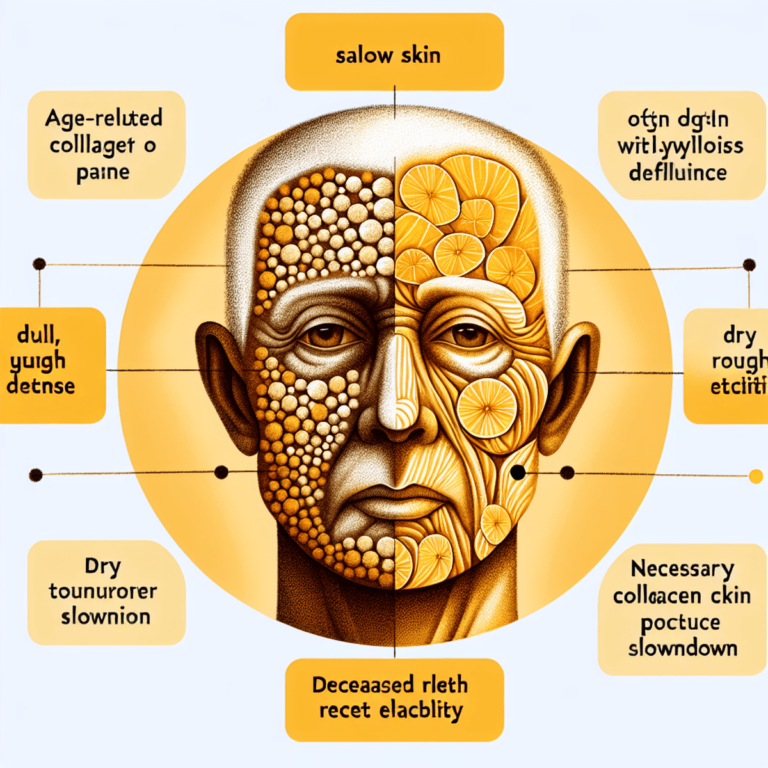What to Know About Gel vs. Shellac Manicures

Introduction
Gel vs. Shellac Manicures, What to Know
Gel manicures are made with liquid gel that hardens under UV light, while Shellac nails are a proprietary brand of gel polish that combines the features of polish and gel.
Understanding the differences between gel and Shellac manicures is crucial for making an informed decision about which option best suits your needs.
This article aims to provide a comprehensive comparison of gel and Shellac manicures, including their application and removal processes, pros and cons, and considerations for choosing between the two.
Understanding Gel Manicures
Gel manicures have become increasingly popular in recent years. They are a type of manicure where gel nails, made with liquid gel, are hardened under a UV light. This process creates long-lasting and durable nails that can withstand daily wear and tear. Here are some key points to understand about gel manicures:
Pros of Gel Manicures
There are several benefits to getting a gel manicure:
- Extended Lifespan: One of the main advantages of gel manicures is their extended lifespan compared to traditional polish. While regular nail polish may chip or peel within a few days, gel manicures can last up to two weeks or even longer with proper care.
- Resistance to Chipping: Gel nails are highly resistant to chipping, making them ideal for those who want a long-lasting and flawless manicure. The gel formula creates a strong protective layer over the natural nail, reducing the chances of damage.
- Glossy Finish: Gel manicures offer a high-gloss finish that remains shiny throughout the duration of the manicure. This glossy appearance gives gel nails a professional and polished look.
- Quick Drying Time: Unlike traditional polish that requires significant drying time, gel nails cure instantly under the UV light. This means you can leave the salon without worrying about smudging or ruining your freshly painted nails.
- Versatile Designs: Gel nails offer endless design possibilities. From intricate nail art to simple solid colors, you can achieve any desired look with gel polish.
With these benefits in mind, it’s no wonder why many people opt for gel manicures over traditional nail polish.
“Gel manicures offer an extended lifespan compared to regular polish and provide resistance against chipping. The glossy finish and quick drying time make them a convenient choice for those seeking long-lasting and impeccable nails.”
Drawbacks of Gel Manicures
Gel manicures have many advantages, but they also come with some potential drawbacks that you should be aware of before deciding if they are the right choice for you. Here are a few cons to consider:
- Dry cuticles from the dehydration process: Gel nails are made with a liquid gel that hardens under UV light. During the application process, the gel can dehydrate the cuticles, leaving them dry and potentially prone to cracking or peeling. To avoid this, it’s important to regularly moisturize your cuticles and nails.
- Unsuitability for weak or damaged nails: Gel manicures require a certain level of nail strength and health. If your nails are weak or damaged, the gel may not adhere properly and can lead to premature lifting or peeling. It’s important to have a strong base before getting a gel manicure to ensure long-lasting results.
It’s worth noting that these potential cons can be mitigated with proper nail care and maintenance. Regularly moisturizing your cuticles and nails can help prevent dryness, and taking breaks between gel manicures can give your natural nails time to recover and strengthen.
Overall, while gel manicures offer long-lasting and durable results, it’s important to consider the potential drawbacks they may have on your nail health. If you have weak or damaged nails, it may be best to consult with a professional nail technician to determine if gel manicures are suitable for you.
Application Process for Gel Manicures
Gel nails are made with liquid gel that hardens under UV light, resulting in a long-lasting and durable manicure. The application process involves several key steps:
Step 1: Preparation
Begin by cleaning and shaping the nails to your desired length and shape.
Step 2: Base Coat
Apply a thin layer of gel base coat to the nails from a reputable brand like Essence. This helps to protect the natural nail and promotes adhesion of the gel color.
Step 3: Color Coats
Apply one or two coats of the gel color polish, ensuring even coverage and smooth application. Each layer is cured under a UV or LED lamp to harden the gel.
Step 4: Top Coat
Finish with a layer of gel top coat to seal in the color and provide a glossy finish. The top coat is also cured under UV or LED lamps.
The curing process under UV or LED lamps is crucial as it solidifies each layer of gel, creating a strong and durable finish. Once cured, the nails are instantly dry and resistant to smudging or chipping.
By following these steps, as outlined in this comprehensive guide on how to apply gel polish perfectly, you can achieve a professional-quality gel manicure that offers extended wear and vibrant color.
Removal Process for Gel Manicures
To maintain the health and appearance of your nails, it’s important to remove gel manicures properly. Here are the steps you can follow for a safe and effective removal process:
- Prepare the Supplies: Before you begin, gather all the necessary supplies, including acetone, cotton balls or pads, aluminum foil, a cuticle pusher, and nail file.
- File the Top Coat: Use a nail file to gently file down the top coat of your gel manicure. This step helps break the seal and allows the acetone to penetrate the layers of gel more effectively.
- Soak in Acetone: Moisten a cotton ball or pad with acetone and place it directly onto your nail. Wrap each finger with a small piece of aluminum foil to hold the cotton ball in place. Leave them on for about 10-15 minutes to allow the acetone to soften the gel.
- Remove Gel Polish: After soaking, gently press down on each finger and twist slightly to remove the foil wraps. Slide off the foil and cotton ball, which should have loosened the gel polish.
- Scrape Away Gel: Use a cuticle pusher or an orangewood stick to gently scrape away any remaining gel residue. Be careful not to apply excessive pressure or scrape too aggressively, as this can damage your natural nails.
- Moisturize: Once all the gel has been removed, thoroughly wash your hands with warm water and gentle soap to remove any traces of acetone. Apply cuticle oil or a nourishing hand cream to moisturize your nails and surrounding skin.
By following these steps, you can safely remove gel manicures without causing any harm to your nails. Remember to be patient and gentle during the removal process to avoid unnecessary damage.
Pro Tip: If you find it challenging to wrap each finger individually, you can also use CND remover wraps. These pre-soaked pads are designed specifically for gel polish removal and make the process even more convenient.
Understanding Shellac Manicures
Shellac nails are a type of gel polish that has become popular for its special qualities. Let’s take a closer look at the advantages and disadvantages of Shellac manicures, as well as how they are applied and removed.
Pros of Shellac Manicures
When thinking about getting Shellac manicures, there are several clear benefits to keep in mind:
- No Need to Roughen the Nail Bed: Unlike some gel manicures that require roughening the nail bed for better adhesion, Shellac nails do not need this step. This can be attractive to people who want to minimize any potential damage to their natural nails.
- Wide Range of Color Options (61 Colors): Shellac offers a wide selection of colors, giving you plenty of choices for different nail designs and styles. With 61 colors available, you can easily find shades that suit your preferences and enhance your overall look.
Shellac manicures are perfect for those who prioritize convenience and a variety of color options without compromising the health of their natural nails.
Cons of Shellac Manicures
Shellac nails, being a proprietary brand of gel polish, offer several advantages such as not requiring roughening of the nail bed and providing a wide variety of colors. However, there are some potential drawbacks to consider:
- Higher Susceptibility to Chipping: Compared to gel manicures, Shellac manicures are more prone to chipping. While they offer a glossy and durable finish, the risk of chipping may be a concern for some individuals.
When choosing between gel and Shellac manicures, it’s essential to weigh these factors carefully and consider your personal preferences and nail condition.
Application Process for Shellac Manicures
When it comes to applying Shellac manicures, it’s important to understand how Shellac works as a brand of gel polish. Here is a breakdown of the application process:
Introduction to Shellac Manicures
Shellac nails are a type of gel polish that come in many different colors. Unlike other types of gel polish, Shellac doesn’t require you to roughen up your nails before applying it. This means less damage to your natural nails!
Here are some key features of Shellac manicures:
- They last longer than regular nail polish, with an average wear time of 2-3 weeks.
- The finish is super shiny and glossy, giving your nails a salon-worthy look.
Step-by-step guide to applying Shellac manicures
The process of applying Shellac manicures is similar to other types of gel manicures. Here’s how it’s done:
- Start by preparing your nails: remove any old polish, push back your cuticles, and shape your nails.
- Apply a thin layer of base coat to each nail, making sure to cover the entire surface.
- Cure the base coat under a UV or LED lamp for the recommended time (usually around 30 seconds).
- Next, apply two thin coats of Shellac color polish, allowing each coat to cure under the lamp.
- Finish off with a layer of top coat to seal in the color and add extra shine.
- Cure the top coat under the lamp for the recommended time.
Curing process under UV or LED lamps
Just like other types of gel manicures, Shellac requires curing under UV or LED lamps. This is an essential step that helps harden the gel polish and ensure a long-lasting result.
Here’s what you need to know about the curing process:
- UV lamps are older technology and typically require a longer curing time (2 minutes per coat).
- LED lamps are newer and faster, with a curing time of around 30 seconds per coat.
- Always follow the specific instructions for your brand of gel polish and lamp.
The ease of application and the wide range of color options make Shellac manicures a popular choice among nail enthusiasts. Give it a try and see why it’s loved by many!
Removal Process for Shellac Manicures
Shellac nails, being a proprietary brand of gel polish, have their own unique features and removal process. Here’s how you can safely remove your Shellac manicure:
- Gather your supplies: Before you start the removal process, make sure you have all the necessary supplies ready. You will need acetone, cotton balls or pads, aluminum foil, a cuticle pusher, and CND remover wraps (optional).
- Soak in acetone: Pour some acetone into a bowl or soak-off tray. Then, soak your nails in the acetone for about 10-15 minutes. The acetone will help break down the gel polish and make it easier to remove.
- Wrap with aluminum foil: If you prefer a faster removal method, you can wrap each nail with a small piece of aluminum foil after soaking them in acetone. This helps to increase the effectiveness of the acetone by trapping heat and accelerating the removal process.
- Scrape away the gel: After soaking, gently scrape away the softened gel polish using a cuticle pusher or an orangewood stick. Be careful not to apply too much pressure or scrape too aggressively as this can damage your natural nails.
- Use CND remover wraps (optional): If you have CND remover wraps, you can use them instead of aluminum foil to wrap your nails after soaking in acetone. These wraps are specially designed to hold the acetone-soaked cotton securely against your nails for more efficient removal.
By following these steps, you can safely remove your Shellac manicure without causing any damage to your natural nails. Remember to be patient and gentle during the removal process to ensure the best results.
Choosing Between Gel and Shellac Manicures
Nail Condition Considerations
When deciding between gel and Shellac manicures, it’s crucial to consider your nail condition. The health and strength of your natural nails play a significant role in determining which type of manicure is most suitable for you. Here’s how nail condition affects the choice between gel and Shellac manicures:
- Weak or Damaged Nails: If your nails are weak or damaged, it’s essential to proceed with caution when opting for gel or Shellac manicures. Both of these treatments involve a dehydration process that can potentially exacerbate the condition of weak or damaged nails. The drying effects of the curing process under UV or LED lamps, as well as the removal process involving acetone, may further compromise the integrity of fragile nails.
Note: It’s important to recognize that both gel and Shellac manicures may not be the best choice for individuals with weak or damaged nails. The potential risks of exacerbating existing nail conditions should be carefully weighed against the desire for long-lasting and chip-resistant manicures.
In summary, understanding your nail condition is crucial in making an informed decision between gel and Shellac manicures. While both options offer durability and extended wear compared to traditional polish, it’s essential to prioritize the health and well-being of your natural nails when choosing a suitable manicure treatment.
Remember, each person’s experience with gel and Shellac manicures can vary based on individual nail characteristics, so consulting with a professional nail technician is advisable before making a decision based on personal preference, nail condition, and design preferences.
Factors to Consider When Choosing Between Gel and Shellac Manicures
When deciding between gel and Shellac manicures, it’s important to think about what you prefer and the current state of your nails. Here are some things to keep in mind:
- Your Personal Preference: Your own liking for a specific removal method can make a big difference in your choice. Some people may enjoy the process of soaking their nails in acetone for gel manicures, while others might find it more attractive to have their Shellac polish gently scraped off.
- The Condition of Your Nails: If your nails are weak or damaged, it’s crucial to select the removal method that will cause the least harm. Both gel and Shellac manicures can potentially make your nails weaker because they remove moisture during application. But if your nails are already in bad shape, it’s best to talk to a nail technician or dermatologist before getting either type of manicure.
- Your Nail Design Preferences: If you like trying out different nail styles and changing your polish color often, Shellac manicures might be more suitable for you. They offer a wide variety of 61 colors, giving you more opportunities to express your personal flair.
- The Consequences of Incorrect Removal: Using the wrong techniques to take off gel or Shellac polish can lead to problems like peeling, thinning, or weakening of the nails. It’s crucial to learn how to remove them properly and seek professional help if necessary.
By considering these factors, you’ll be able to make a well-informed decision based on what you want and the condition of your nails. Just remember that everyone’s experience is different, so it’s essential to prioritize your own well-being when choosing between gel and Shellac manicures.
Conclusion
Ultimately, the choice between gel and Shellac manicures boils down to personal preference. Each type has its own set of advantages and drawbacks, but what matters most is how you feel about the look, feel, and longevity of the manicure. Your comfort and satisfaction should be the primary factors influencing your decision.
When deciding between gel and Shellac manicures, consider your lifestyle and daily activities. If you have a busy schedule or frequently engage in activities that are tough on your nails, the durability of one type over the other might sway your decision.
If you’re still uncertain about which manicure type is best for you, consult a professional nail technician. They can provide personalized recommendations based on your nail condition, lifestyle, and preferences.
In the end, both gel and Shellac manicures offer long-lasting, durable results that can elevate your overall look. Consider your individual needs and preferences to make an informed decision that leaves you feeling confident and satisfied with your beautiful manicure.










